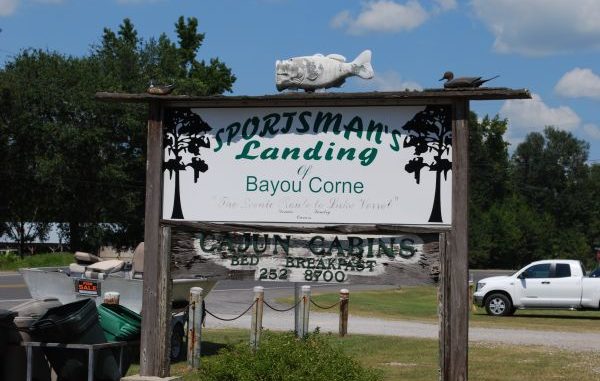
Since mid-summer, Bayou Corne has received plenty of not-so-welcome publicity because of what the media has dubbed the “Bayou Corne Sinkhole.”
Things started as early as June 8, when the community’s residents reported earth tremors and shaking. At the same time, boaters reported gases bubbling to the surface of the bayou that gives the community its name.
By mid-July, the number of tremors was up to 10 to 20 per day. Around July 24 the tremors increased sharply, into the hundreds.
Then on Aug. 2, they quit.
The next day, a Friday, local residents woke to a pronounced diesel smell. Later in the day, officials exploring the cypress swamp south of Highway 70 found a newly treeless, circular, slurry pit of slush south of Highway 70.
The media immediately dubbed it “The Sinkhole.”
Best scientific thought was that a cavern in the Napoleonville Salt Dome had collapsed and the sands, shale, silt, clay and ultimately swamp slush flowed downward to fill the cavity. With the flow went the area’s trees and all.
Swamp waters and muck from the surrounding area flowed into the void, filling it with a slurry.
Supporting the theory is the presence of salt in the slurry of the sinkhole, as well as enough diesel fuel to create a sheen on the surface. The presence of diesel fuel isn’t surprising because some was used in the creation and maintenance of the cavern.
The huge salt dome, invisible to the human eye because it does not protrude above the surface (as do others, such as Avery and Weeks islands), is home to 36 hydrocarbon storage and 23 brine caverns. Brine caverns are formed by using injected water to dissolve and carry to the surface salt from within the dome for use by industry.
Houston-based Texas Brine Company L.L.C. owns the suspect cavern. After two decades of brine extraction from the site, the firm capped and abandoned the well last year. The company began drilling an investigatory well on Aug. 15 to determine the best course of remedial action, if any.
The hub-hub has left many of the area’s regular anglers uncertain. They are concerned about their own safety, as well as the safety of consuming fish from the area. Environmental interests groups fanned fears on their favorite medium, the Internet, with headlines like Sinkhole: H-Bomb Explosion Equivalent in Bayou Corne Possible.
The facts are somewhat less spectacular. Little environmental damage far beyond the perimeter of the sinkhole is expected. Salinity levels within the slurry of the hole are in the order of one part per thousand, as compared to 32 parts per thousand in seawater.
At this concentration, salinities are not high enough to kill trees or fish.
Some natural gas is also being released at the slurry site. Natural gas, of which methane is a primary component, is not toxic so no impacts on plant or animal life is expected. The small amount of diesel found at the site will cause soft vegetation die-back, but the diesel is contained within oil booms.
The gas in the bubbles rising in the bayou and private property has also been analyzed and found to contain methane (swamp gas) at levels of less than 1,000 parts per million (ppm). Methane does not become explosive until it reaches levels of 10,000 ppm.
Dennis Landry, owner of the only boat launch in the area (the Sportsman’s Landing of Bayou Corne) and Cajun Cabins lodging, puts things in perspective for sportsmen.
“I think that a lot of fishermen are still uncomfortable because of the bad publicity and press,” Landry said. “But everything is still open. The bayous are open to the public, and patrolled regularly by the Assumption Parish Office of Emergency Planning and the Louisiana Department of Environmental Quality.
“The boat ramp is still open, although parking is a little limited because of all the response vehicles. But, if you want to fish, I will find a place for you to park. Some cabin rentals are still available, too.
“No brine from the site, which is about a half-mile from Bayou Corne, has reached the bayou. Nearly half of the families that live here have never evacuated. The only fish kill that we have had was caused by Hurricane Isaac, and it was moderate compared to the one after Hurricane Andrew.
“Most of the best fishing is to the south and west, away from the sinkhole and the gas bubbling. I think that the fishing this fall could be quite good because of so much less pressure by fishermen the last few months. Things start happening with sac-a-lait in November. It gets great in December and goes through January.”
Landry, who closely monitors events at the sinkhole as well as what is happening with fishing, is happy to take calls from interested sportsmen at 985-252-8700.